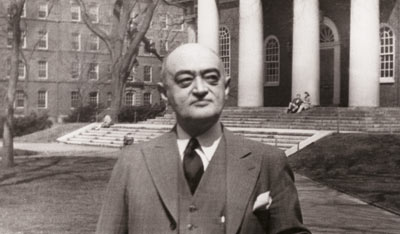Our Members and Friends often ask what motivates us to take on huge research projects like Top Energy Universities, the energy ecosystem mapping project, or the upcoming study of all incubators and accelerators in the U.S. that have energy- and/or climate-tech in their portfolios.*
One answer is "curiosity." There is nothing more exciting to us than a huge question and looking for answers. But there is also a deeper motivation.
The energy transition is upon us and will continue at an unrelenting pace. Unprecedented and unsolved challenges continue to pile up. AES experts and professionals from every field have the unique talents, expertise, and resources that offer our best hope for humanity’s future. We are confident that someone, somewhere in our Society has, or will have, answers to every challenging question.
To aid the work of finding critical solutions, we at AES believe there is an on-going and pressing need for a landscape view of the entire energy sector, for insight into the larger forces that affect the specialized decisions that are made every day.
Our North Star is to be the North Star for you.
A few years ago, our friends in the energy practice at Wilson Sonsini asked us to survey all energy- and climate-tech incubators as a way to survey an active part of the innovation landscape. They wanted everyone to have the chance to see tomorrow's energy today. We welcomed the challenge.
Our survey of all incubators and accelerators of energy-tech will be released in two weeks.* To inspire you to think ahead, this issue of Energy Today asks a variety of provocative questions about innovation and a preview of what’s to come.
* At time of press, there are 385 incubators and accelerators in the US that have energy- and/or climate-tech in their portfolios; the Report will be published on March 8, 2021.
Contact us to order the Report or the Excel dataset at an "early-bird" discount.
One answer is "curiosity." There is nothing more exciting to us than a huge question and looking for answers. But there is also a deeper motivation.
The energy transition is upon us and will continue at an unrelenting pace. Unprecedented and unsolved challenges continue to pile up. AES experts and professionals from every field have the unique talents, expertise, and resources that offer our best hope for humanity’s future. We are confident that someone, somewhere in our Society has, or will have, answers to every challenging question.
To aid the work of finding critical solutions, we at AES believe there is an on-going and pressing need for a landscape view of the entire energy sector, for insight into the larger forces that affect the specialized decisions that are made every day.
Our North Star is to be the North Star for you.
A few years ago, our friends in the energy practice at Wilson Sonsini asked us to survey all energy- and climate-tech incubators as a way to survey an active part of the innovation landscape. They wanted everyone to have the chance to see tomorrow's energy today. We welcomed the challenge.
Our survey of all incubators and accelerators of energy-tech will be released in two weeks.* To inspire you to think ahead, this issue of Energy Today asks a variety of provocative questions about innovation and a preview of what’s to come.
- We need energy- and climate-tech startups to succeed, but most will fail—what renowned economist Joseph Shumpeter called "creative destruction." Why is that and what can we do about it?
- We live in an age of urgency, so do we need more unicorn startups? Or, do we actually need more camels?
- If energy is this generation's greatest challenge, why is it that a majority of people don't have an equal opportunity to participate in meeting it?
- Imitation is more than just flattery, it is fundamental to "best practices". This issue offers a sneak peek at the organizations that support the exceptional incubators and accelerators in our upcoming report.
* At time of press, there are 385 incubators and accelerators in the US that have energy- and/or climate-tech in their portfolios; the Report will be published on March 8, 2021.
Contact us to order the Report or the Excel dataset at an "early-bird" discount.
Table of Contents
|
Joseph Schumpeter and Creative Distruction
Joseph Schumpeter's work in economics was so influential that today's thinking about capitalism is in large part his - specifically, his emphasis on innovation, entrepreneurship, business strategy, and "creative destruction." See also: 95 and Still King
|
|
A Case for Camels
The venture capital model is built around finding and funding the next unicorn – a high-growth startup that will become a company valued at over $1 billion. But it's likely that the most successful entrepreneurs don’t build unicorns. Instead, they build camels, startup companies focused on sustainable growth and resilience from day one. See also: Making Tech Miracles
|
|
Gender and the Innovation Gap
If impactful energy- and climate-tech is truly this generation’s greatest challenge, then we need more entrepreneurs in this space. Not only should we not exclude women, but we should recognize that their leadership often leads to higher profits. |
|
Where Innovation Thrives
In, Where Good Ideas Come From: The Natural History of Innovation, Steve Johnson analyzes 200 modern innovations and compares how many came from individual entrepreneurs with how many came from a collaborative network outside the market. No suprise, he finds that far more innovations come from open nonmarket networks.* * The AES report on all U.S. energy-tech incubators and accelerators (forthcoming) confirms Johnson’s thesis. |











